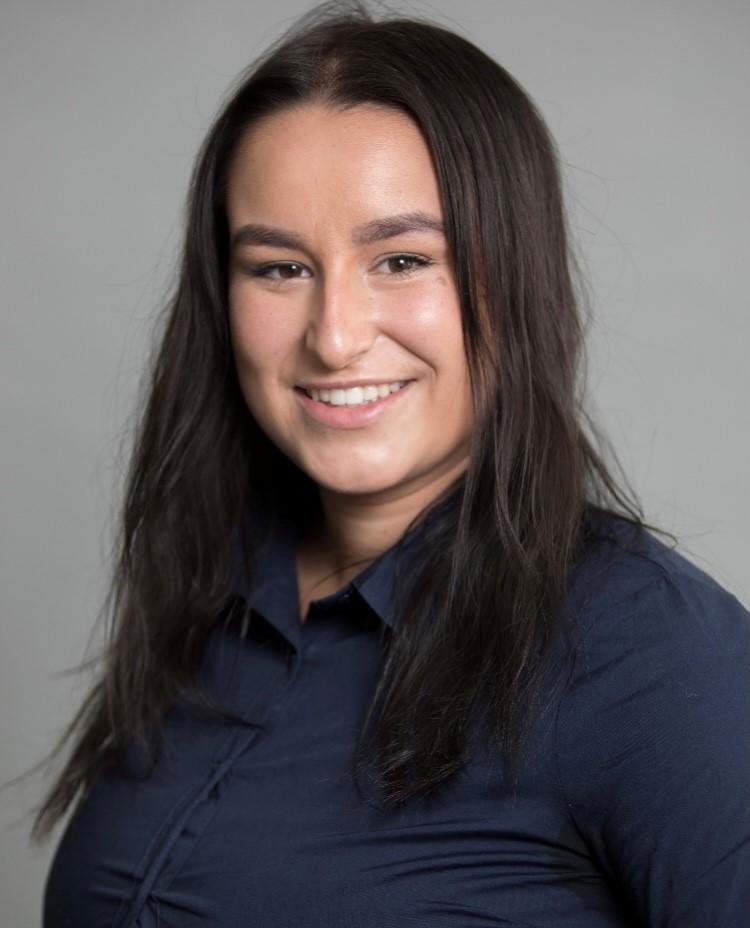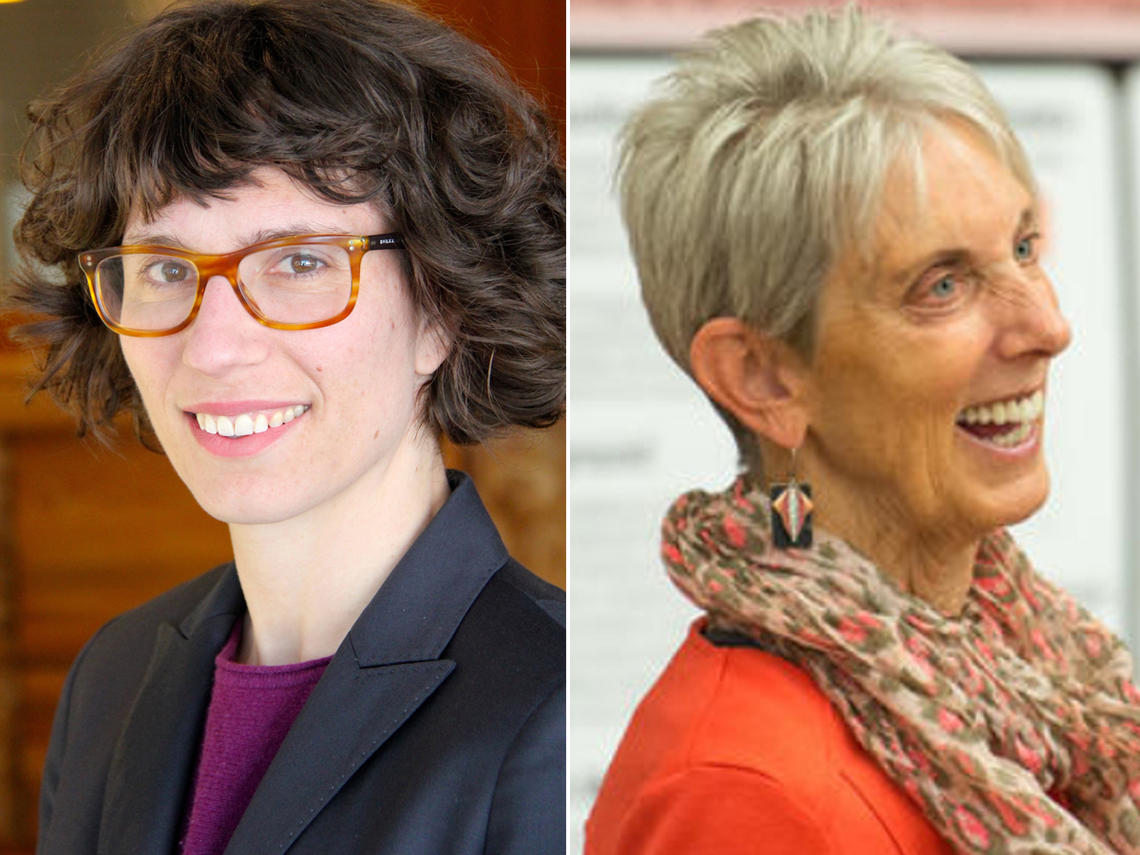Dec. 6, 2022
Future leaders in energy transition train to find solutions for Western Canada

Imagine a world less dependent on fossil fuel for so much of its energy. What will that look like? How can an energy career professional get involved?
A group of students at the University of Calgary, along with their teachers and advisers from academia, industry, government, NGOs, and alumni, roll up their sleeves and work on defining a more sustainable energy future. The students are enrolled in the Master of Science in Sustainable Energy Development (SEDV), an interdisciplinary graduate program that prepares the next generation of leaders in sustainable energy.
Research projects undertaken by the SEDV Class of 2022 give a refreshing glimpse of a world in energy transition, for example: a shift toward more diverse sources of electricity and heat, not fewer; a world shaped more by local conditions and less by geopolitics or distant markets.
Vibrant mix of ideas and solutions
SEDV is a combined offering through the School of Public Policy (SPP), Haskayne School of Business, Schulich School of Engineering, School of Architecture, Planning, and Landscape, and Faculty of Law. The rich range of academic perspectives comes to life as students apply their own interests and experiences to global challenges.
“Our SEDV students bring remarkably diverse academic backgrounds and real-world experience to the challenges of energy transition,” says Dr. Jackie Sieppert, PhD, interim director of SPP. “It is this vibrant mix of ideas and experience that defines their student experience, and ultimately will help us find the solutions we are looking for.”
Dr. Sara Hastings-Simon, PhD, is the SEDV program director. She explains that capstone research projects are a core part of the degree and a requirement to graduate.
“The capstone project provides multiple benefits to SEDV students,” she says. “By applying concepts from their studies in a real-world situation, they enhance their understanding of the theoretical ideas, and build a deeper understanding in an area of their choice.”
Dr. Irene Herremans, PhD, teaches the three levels of the capstone research course. The students and organizational partners bring innovative ideas to the table, together refining a research question that benefits all parties.
“The capstone research course is a microcosm of what we need to do on a larger scale to mobilize the effort and knowledge as we make our way on our sustainability journey,” Herremans says.
For the Class of 2022, some of those projects touched on the role of solar, marine, and geothermal energy solutions. Here’s a sample of what they discovered.

Nikhitha Gajudhur
Solar power options in oil and gas exploration
Pipestone Energy Corp., an oil and gas exploration company with its head office in Calgary, looks for ways to reduce their greenhouse gas (GHG) emissions. Partnering with the SEDV program, the firm deepened research on their net-zero goals. One option they were considering: integrating solar power in their Montney Formation operations near Grande Prairie.
The initiative caught the attention of student Nikhitha Gajudhur, who has a keen interest in how companies can safeguard the environment through practices and policies. Embracing the challenge, Gajudhur analyzed the optimal design, cost, and benefits of an onsite solar energy farm. An interconnected grid of solar panels could reduce the company’s electrical usage from traditional, emission-producing sources, while earning renewable energy credits within the province’s regulated electrical grid.
Gajudhur’s analysis took into account electrical consumption, evolving solar panel technologies, design configurations, installation costs, payback periods, and the potential impact on the company’s overall GHG footprint. Using advanced system performance software, her economic analysis demonstrated the long-term benefit of a design costing about $2.9 million.
A 5.03-acre solar farm, built on a well pad site and consisting of bifacial panels and one-axis tracking, could generate 1,796 megawatt-hours of energy per year — the equivalent of about 57 per cent of the company’s current electrical consumption — while displacing up to 1,068 tonnes of CO2.
Gajudhur sees growing interest in the oil and gas industry in solar energy, along with other GHG-reducing strategies such as fleet electrification or technologies to reduce methane leaks and flaring.
“I do think, if they have the capital and the land space to do it, it’s an attractive option, especially with the opportunity to sell back to the grid. A lot of companies even outside oil and gas are looking at power-purchase agreement types of situations.”
After she graduated, Gajudhur began working in an internship with the Canadian Climate Institute, focusing on technical pathways and policy implications for decarbonizing the building heat sector.

Jessica Owen
Replacing diesel energy in small communities
The global hunt for new energy sources reveals exciting possibilities. One of those is osmotic power — harnessing the energy generated by the physical reaction when two water sources containing different salt concentrations flow together.
Canada, with more coastline and more freshwater than any other country, is a strong candidate to tap this promising energy source, says SEDV student Jessica Owen. And yet, she noticed dozens of small communities near coastal areas are forced to rely on diesel-powered generators for heat and electricity.
“Diesel dependency is a significant issue for a lot of rural communities in Canada,” Owen says. “However, Indigenous communities have become leaders in clean energy and a lot of communities have been leading projects in their communities that have reduced their diesel reliance.”
The community of Bella Coola, B.C., located in the Great Bear Rainforest, is searching for alternatives to expensive, unreliable, polluting diesel fuel delivered from distant sources. A new hydroelectric project planned for Nooklikonnik Creek will help meet future needs. Owen wondered: Could emerging marine energy technology, such as pressure retarded osmosis (PRO), also help communities such as Bella Coola?
Contributing to the growing body of knowledge on the topic, she analyzed the feasibility of constructing a PRO facility in the region from the standpoints of watershed capacity, technical feasibility, future cost savings, and environmental impact.
While she found that PRO is gaining traction in Quebec, and marine renewables have caught the attention of other provinces especially in the Maritimes, PRO is likely not a feasible energy source in the near future for Bella Coola. The PRO process relies in part on semi-permeable membranes still under scientific development and testing. Given current technology, the membranes are expensive and don’t deliver enough energy, her research found.
But the waterflows of creeks and rivers in the region could support a future PRO facility, she adds. The potential for PRO in Bella Coola will depend on its cost-competitiveness compared to the cost of diesel or other renewable resources, she concludes.
Owen looks forward to working with Indigenous-led energy initiatives in the future. “I am excited to see new projects that pop up in Bella Coola and surrounding areas, whether communities decide to look into PRO projects in their communities or not,” Owen says. “I am motivated not so much on the particular technology but on finding solutions that may fit best for a community’s goals.”

Nicolas Barry-Hallee
Geothermal energy beneath our feet
Dig deeply enough beneath the Earth’s surface and you’ll find heat. Dig deeper and it gets hotter. Nicolas Barry-Hallee, a geologist in training, has long been fascinated by how we can harness abundant energy from the layer of hot and molten rock beneath the crust of the Earth. Working in the geotechnical and construction industry, Barry-Hallee was drawn to study geothermal energy as he decided to expand his career options in the SEDV master’s program.
Doors opened. He seized a capstone opportunity to work with Dr. Roman Shor, director of the Energi Simulation Centre for Geothermal Systems Research at UCalgary. Barry-Hallee assessed the technical, environmental, and economic feasibility of constructing a closed-loop geothermal system beneath main campus. His theoretical analysis focused on a cutting-edge geothermal drilling concept being developed and tested by Calgary-based Eavor Technologies. The Eavor-Loop circulates a benign working fluid, typically water, through a radiator-like loop that collects heat via conduction from the Earth’s natural geothermal gradient.
Barry-Hallee’s capstone project was part of the Campus as a Learning Lab (CLL) initiative that leverages student research to consider sustainability scenarios throughout the university, he explains. He was able to access data from the university’s Facilities Development team for his research through CLL.
“My project is just one of many innovative projects with this initiative and it excites me greatly to see how the university not only supports the success of their students, but encourages their participation in solving sustainability challenges on campus,” he says.
Barry-Hallee analyzed the technical feasibility and GHG improvements of various heat-exchange design scenarios. His analysis will contribute to ongoing research as UCalgary moves forward with its Climate Action Plan, which aims for a 50 per cent reduction in greenhouse gas emissions by 2030 and carbon neutrality by 2050.
Both the University of Regina and Cornell University are examining geothermal as a potential source of energy. Projects such as the Meager Creek Geothermal Project in B.C. and the Terrapin Geothermics partnership near Grande Prairie are being watched closely by industry.
“It’s quite inspiring to see the amount of interest a once-niche subject like geothermal energy is receiving, and being part of the body of work exploring how geothermal can support the energy transition has been a great experience,” he says.

Sara Hastings-Simon, left, and Irene Herremans
Barry-Hallee recently accepted a position at Summit Nanotech in Calgary working as a sustainability analyst, applying knowledge he gained in the SEDV program as he focuses on lithium extraction, sustainability, and environmental, social and governance (ESG) reporting.
Training for the future
Herremans describes the capstone projects as a real group effort. Industry partners have problems to research. Students choose a topic to research and pair with an academic supervisor who has experience in that field. The research design and execution take place across 10 months. Meanwhile, SEDV staff and alumni work to nurture ongoing relationships with organizations.
“It is a real team effort and very inspiring to see many parties working together to solve complex problems and to make our planet and its people healthier and happier,” Herremans says. “The positivity developed in this group effort leaves no room for negativity, building an unstoppable force toward solving the planet’s problems.”
The SEDV program contributes to the retraining and reskilling needed to keep Calgary, and Alberta, at the forefront of the global energy sector through the energy transition. “In some cases, students go on to employment with the organizations they work with for their capstone,” says Hastings-Simon.
“Many of the companies and organizations that partner with our students in the capstone project come back year after year because of the opportunity to work with our students and academic mentors, the quality of work they get through the program to answer questions that matter for them.”
Thinking about your next career move? Start with UCalgary’s interdisciplinary MSc in Sustainable Energy Development and join the next generation of energy leaders in just 16 months! Learn more
The SEDV capstone research projects play out one of the Sustainable Development Goals set by the United Nations — #17 Partnerships: Strengthen the means of implementation and revitalize the global partnership for sustainable development. Learn more about the UN goal.
Entrepreneurial UCalgary grads make an impact in health care, culture, law, business, the environment, and more. Read more stories about Class of 2022 students.
A note for recent UCalgary alumni: As you transition from student life, we encourage you to check out our Life Kit for Recent Grads — custom-built to inform you about the programs, benefits and services available to you as a member of the UCalgary alumni community.







